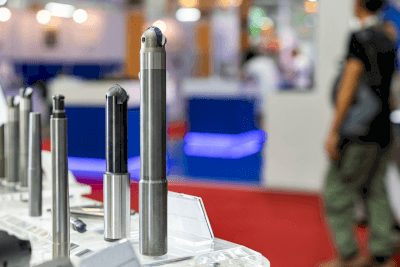What Is a Carbide Ball End Mill?

An everloy-cemented-carbide ball end mill is a cutting tool with a spherical cutting edge made of cemented carbide.
Cemented carbide, also called cemented carbide, is an extremely hard alloy. It is manufactured by adding tungsten carbide or titanium carbide to iron and pressing them together by powder sintering at high temperatures.
Ball end mills have cutting edges on the side and one end face, and the end face side is ball-shaped. Complex curved surface machining is possible. Carbide end mills are mainly used for machining center tools.
Uses of Carbide Ball End Mills
Ball end mills are suitable for cutting work to form curved surface shapes. In addition, they are also used for fillet sections to prevent parts and debris from accumulating in the bottom corners and for machining curved-shaped grooves as flow paths for liquids.
Specific applications include shape machining of molds, such as injection molds and lens molds, modeling, and small parts. The spherical tip of the cutting tool enables the machining of complex curved surfaces. However, it is not suitable for cutting work that requires sharp edges at the bottom corners.
Cutting with a ball end mill provides higher dimensional accuracy and more complex cutting work than plastic forming, such as press work.
Principle of Carbide Ball End Mills
Carbide ball end mills can machine curved surfaces using a ball-shaped cutting edge. Furthermore, when used in conjunction with NC machine tools, it is possible to machine complex three-dimensional curved surfaces.
Ball end mills do not have a large rigidity due to the small cross-sectional area of the cutting edge. Therefore, care must be taken to avoid spilling of the cutting edge. Cemented carbides for cutting tools are classified into three application categories: Class P, Class M, and Class K.
1. P-Type
Type P has excellent heat resistance and weldability, and contains a large amount of titanium carbide TiC and tantalum carbide TaC. This alloy is resistant to thermal damage, such as craters and thermal cracks. Its main applications are in the processing of steel, alloy steel, and stainless steel.
2. Type M
Type M contains moderate amounts of titanium carbide TiC, tantalum carbide TaC, etc., and is a strong alloy in terms of both thermal and mechanical damage. Its main applications are in the processing of stainless steel, cast iron, and ductile cast iron.
3. K Type
Class K is a tungsten carbide-WC alloy with excellent strength. It is particularly resistant to mechanical damage, such as crevice wear.
Its main applications are in the machining of cast iron, nonferrous metals, and non-metals. On the other hand, due to its hardness, it has a low stickiness and is easily broken. It is strong in compression, but weak against tensile and lateral forces.
Features of Carbide Ball End Mill
Advantages
- Compared to press work and other shearing processes, cutting with end mills offers superior dimensional accuracy.
- Unlike ordinary end mills, the rounded cutting edge enables the machining of complex curved surfaces by eliminating the edge portion. Curved surfaces can be freely formed as long as the radius of curvature is greater than the ball radius of a ball end mill.
- With diamond coating, it is possible to machine carbide materials at an even higher level.
- If the cutting edge wears out, it can be reground, making it economical.
Disadvantages
- End milling results in a lower yield of material because there are more parts to be removed.
- The machined surface is corrugated, which may cause surface variation. Therefore, machining takes longer because of the fill-in process.
- Right-angle machining of the bottom corner is not possible. In addition, the discharge of cutting chips is poor.
Types of Carbide Ball End Mill
Carbide ball end mills are classified into three types in terms of structure: one-piece type, separate cutting edge type, and brazed type.
1. Integrated Type
The integral type is an end mill in which the shank and cutting edge are integrated into a single unit. Its high rigidity enables high-precision machining. Also, it can be re-grounded and re-coated for use even after wear.
2. Cutting Edge Separation Type
The cutting edge separation type is a type in which the cutting edge, called an insert, is fixed with a screw or a retainer. The price is reduced by partially using cemented carbide material. The feature of this type is that the cutting edge can be replaced with a new one when it is worn out.
3. Brazing Type
Brazed type is an end mill with a carbide blade brazed to the shank. This is a low-cost type.